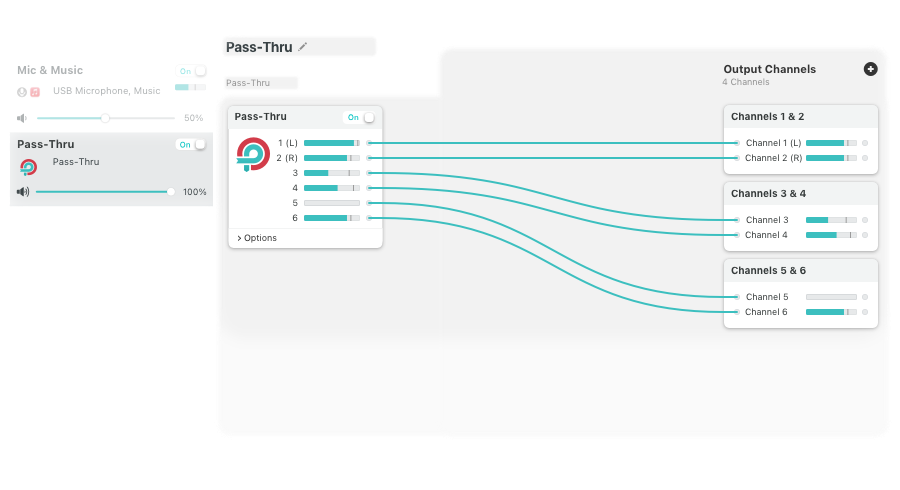
It included SoundFlowerBed which was a basic routing application. SoundFlower was something like BH but it is not developed any further. One could think of loopback to be able to create "BlackHoles".
#Audio hijack vs loopback software#
You need software just like Loopback, except that loopback also allows you to create virtual audio devices like BH. Just a beefier versionĭon't have all the apps running, aggregate fail: This is the stand-out part - it does not fail.It is simply an audio device that can take input and be an input to something else itself.
#Audio hijack vs loopback mac#
So it's taking some cues from Audio MIDI Setup in Mac OS.? Is it creating aggregate devices? What happens when you don't have all the apps running? Does the aggregate device fail like it does in Audio MIDI Setup if one of numerous devices isn't present? (Example: two multichannel audio interfaces and two iOS devices connected one day, but then missing one iOS device the next day results in the whole aggregate device being entirely unavailable)Īudio MIDI setup: Yes. So it's taking some cues from Audio MIDI Setup in Mac OS.? Is it creating aggregate devices? What happens when you don't have all the apps running? Does the aggregate device fail like it does in Audio MIDI Setup if one of numerous devices isn't present? (Example: two multichannel audio interfaces and two iOS devices connected one day, but then missing one iOS device the next day results in the whole aggregate device being entirely unavailable) The routing feature for output is similar to Loopback, but not identical. Those devices you've just made can be sent to wherever, including Audio Hijack.Īudio Hijack allows you to tap any sources including the virtual audio device you may have made with loopback and record them all. Loopback has more to do with making specific virtual audio devices, combining multiple sources. Even place audio plugins for sound manipulation on any source in your custom build. Plugin the sources into a configuration (graphically) and link the order or priority.
#Audio hijack vs loopback trial#
There's a limited trial version available on the official site too.Īnd how is Audio Hijack compared to LoopBack? I use AH all the time and the latest major version is sort of a plug and build system. Loopback 1.1.5 is available directly from the makers and costs $99. We have no criticism of Loopback at all and if you work in audio, it should be on your Mac. While extra features and a fresh look are welcome, we don't need it. Rogue Amoeba has just announced that it will be refining Loopback's design some time later this year to make it clearer to use. So you could nest, for instance, our screen recording combo of app and microphone, with the iTunes to Audition and record everything together until your head hurts. Starting with version 1.1, you could create any number of these Loopback combined sources like microphone/Audition and then nest them together. Well, it's as straightforward as you want it to be. Yet once you have a specific task you want to do, making it happen in Loopback is straightforward.

That does mean that each time we do open Loopback, we have to think to remember how we used it.

We don't have to keep setting this up or even to keep remembering that we did it in Loopback. We did that routing from iTunes to Audition and forever afterwards, that is an audio source available in the Adobe app. Yet, we will go months between actually opening the Loopback app to do any new work. Every time we do any audio work, Loopback is now in the mix somewhere. We make it sound as if we use Loopback every day - in one way we do.


 0 kommentar(er)
0 kommentar(er)
